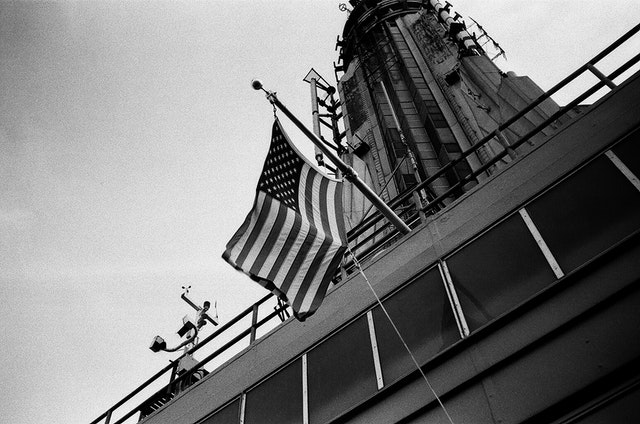War films have evolved over the past century, beginning around the turn of the 20th century with audiences not focusing on the human costs, but rather on the idea that war is necessary for mankind to progress. War films, in particular, have been used to show how Americans will fight for their “way of life” as was seen in movies like All Quiet on the Western Front and The Big Parade.
As time has progressed, more films have focused more on humanizing soldiers
and showing that war is not a means to an end, but rather a way of living. It’s important to note that this isn’t necessarily new; it’s just a new way of looking at war films that have influence by technology and other aspects of society.
The way that Reel Craze is show today doesn’t necessarily fit into a neat timeline–it varies depending on what decade you’re looking at. The following are some key moments in American cinema where audiences applauded a change in film content or praised specific films based.
The earliest war films
The first war films didn’t focus on the human cost of war until after World War One. This was large because World War One had an impact on the American consciousness and changed how Americans, particularly those in high-ranking positions, viewed the world.
In All Quiet on the Western Front and The Big Parade, audiences were able to see the effects of war for soldiers rather than for civilians. In both movies, soldiers came to see that their society wasn’t worth fighting for–in some cases promoting pacifism.
War film in the 1940s
The first significant change in war films’ evolution came in the 1940s. This was when a change in film content began to shift towards the idea that war is not always necessary
and it is possible to have a better life outside of wartime. This was seen with films like The Best Years of Our Lives, which won the Academy Award for best picture during this time.
War films in the 1950s
The 1950s were a time of change. Reelcraze like The Best Years of Our Lives, From Here to Eternity,
and The Red Badge of Courage focused on changes happening in society in World War II, the Korean War, and the Civil War respectively.
In 1954, John Huston released The Man Who Would Be King. The film was set during the 1800s in Afghanistan
and portrayed the British as saviors against the tyranny of the Pashtun people. It was well-received at the time because it shows that war could justify through an emotional connection with soldiers who are fighting for what they believe in.
In 1957, John Ford released Sergeant Rutledge which was an adaptation of one of James Michener’s novels about a black soldier
who is kill for “insubordination” just before World War II ends. It showed how racism during this time period affected white soldiers as well as black soldiers due to racist remarks made by their commanding officers. This led to a larger appreciation for black soldiers during this time period.
In 1958, David Lean direct Lawrence of Arabia which went on to win five Academy Awards including Best Picture despite being release only two years after Sergeant Rutledge. In it, Lawrence goes to uncover why Britain has lost control over its Arabian territories leading him to fight alongside Bedouin tribesmen against British forces trying to take control of oil fields in that region.
War films in the 1960s
War films in the 1960s were some of the first to focus on the human cost of war,
which was rare in earlier films. Contemporary films typically focused on military actions or justifications for war, but films like The Best Years of Our Lives and Going My Way portrayed how soldiers returned home and had to deal with the effects of fighting overseas. This focused on more personal aspects of life rather than just justifying war.
War films in the 1970s
In the 1970s, war films like Apocalypse Now and M*A*S*H developed a sense of realism in their content. Both films focused on portraying violence and the effects of war on soldiers, civilians, and society. These films also explored themes such as racism and imperialism.
War films in the 1980s and 1990s
In the 1980s, war films began to shift their focus from glorifying war, to showing the human cost of war. This can see in films like Platoon, Full Metal Jacket, and Apocalypse Now. These films not only showed the brutal realities of war but also showed that there was another way to live–one where soldiers didn’t have to fight for a cause but rather for themselves.
In the 1990s, audiences were captivated story about how soldiers were both soldiers and civilians. Films like Forrest Gump and Saving Private Ryan showed
that America’s heroes weren’t just the ones fighting on the front lines; they were veterans who had been through so much more than what you could see in a typical film.
These films offered a more realistic view of
what being a soldier is like in an era where we’re trying to move away from warfare in general.
War films in the 21st century.
War films in the 21st century have started to change. In recent years, there has been a lot of debate on how to best show the costs of war and whether or not it’s worth it. One example is Captain Phillips, a true story film about Somali pirates taking over a ship with American cargo. It highlights the difficulties that American soldiers face on both sides of the conflict fighting
for what they believe their country is fighting for but also defending themselves from danger at sea.
Another example of a new trend in war films is in documentaries such as No End In Sight: The Rise
and Fall of American Intelligence where the filmmakers used interviews to discuss and explore how America’s intelligence organizations have fallen short in understanding world events. This is just one way that war films are use more often now to show not only what happens when America fights wars overseas, but also what could happen if it doesn’t.
The evolution of war film depictions over time has changed from focusing on how “war advances mankind” to focusing on humanizing soldiers
and showing that war is not a means to an end, but rather a way of living.





More Stories
OUSM Power Adapters: How to Choose the Best Models for Your Device
Pursuing A Psychology Degree Abroad: Opportunities For Indian Students
Stories That Change the Way We See the World